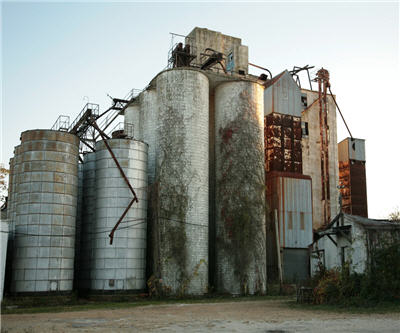Odds against oil sands projects rapidly stacking up

Recent developments are rapidly stacking the odds against Alberta oil sands: the oil price has fallen 20% in one month, the gap between US crude and world prices hit a record on Wednesday above $24, the premium syncrude enjoyed in recent months is melting away and Canadian heavy oil’s discount to US crude has widened to $15.
The question now is how many of the $100 billion of oil sands projects in various stages of development will be completed or run at a profit when Canadian crude only attracts $60-$70 a barrel and could go lower. Sky-rocketing labour and equipment costs and a rising loonie could well turn out to be the proverbial last straw.
The Canadian currency was trading at US$1.01 versus recent highs of $1.06 and has strengthened by over 12% in two years. The loonie hit a low of 78c to the greenback at the start of 2009.
Nasdaq quotes BMO Capital Markets analyst Randy Ollenberger who sees new mining projects profitable at WTI prices of $70 a barrel and up, while Jackie Forrest, director of global oil research for the consulting firm IHS CERA sees them profitable at between $60 and $70 a barrel. Already built mining projects can turn a profit as low as $30 a barrel WTI, they said.
Imperial Oil’s Kearl project is an indication of cost inflation in the oil sands. Imperial said in June the first phase of Kearl will cost about 36% more to build than previously estimated putting the revised figure at $11.2 billion. This week came news of more headwinds for the project when Imperial and partner Exxon said they have revised plans to transport massive equipment called megaloads headed for Kearl through Idaho and Montana after legal challenges and protests forced delays at an extra cost of $70 million.
The Petroleum Economist reports Alberta’s revenue stream is already the most volatile in Canada; every dollar drop in the US oil price amounts to a C$141m hit to the treasury. By that count, it’s lost almost C$2 billion in the past week alone. The province is forecasting a C$3.4 billion deficit in this fiscal year at an average oil price of $95/b.
In a 2011 study forecasting the economic impact of oil sands up to 2035, the Canadian Energy Research Industry said employment from oil sands would increase almost 10 times to 905,000 jobs, adding about C$2.1 trillion to the national economy, or C$84 billion a year from the oil sands alone. These figures may now begin to look too optimistic.
The Canadian currency was trading at US$1.01 versus recent highs of $1.06 and has strengthened by over 12% in two years. The loonie hit a low of 78c to the greenback at the start of 2009.
More News
Rio Tinto, Founders Factory’s Mining Tech Accelerator invests in startups from US and OZ
April 23, 2025 | 04:02 pm
{{ commodity.name }}
{{ post.title }}
{{ post.date }}



2 Comments
Dan Oancea
It’s back and forth all the time. Oil price goes up they all jump and announce the development of new oil sands operations. When it goes down they get shelved. The thing is that they would be mined sooner or later no matter what as it is a huge, attractive, secure and easy to mine oil reserve. If it would happen a few years from now then no worries as it is good for future generations to have some oil down in the ‘safe’.
As for Alberta mediocre governance is the problem not fluctuating oil prices & revenue. There are poorer provinces that are doing OK with no oil revenue.
Some 905,000 jobs? It’s definitely exaggerated. We won’t be able to come up with that many workers anyways, infrastructure is bad, accommodations the same in the oil sands region. We could use a break and take the time to grow slower and safer. IMO.
Jim
The long term prospects for the synthetic crude produced from nothern Albeta bitumen is exttremely favorable. Not only is world demand out-stripping world supply capacity (google the IAEA), but falling reserves in the majority of OPEC nations make the Canadian product look much safer than many other crudes produced else where. From this Albertans perspective the only problems are how to bring more production on line without inflating the local economy uneccessarily and how to support the locxal Albertan concensus for a greener product. Its definitly blue skies for us in Alberta!